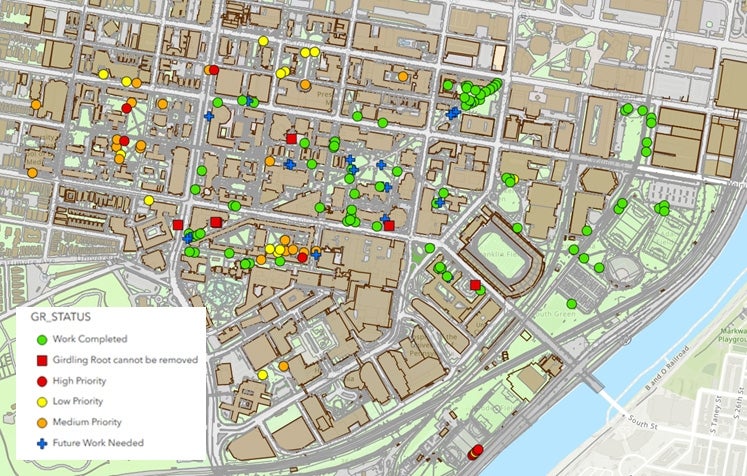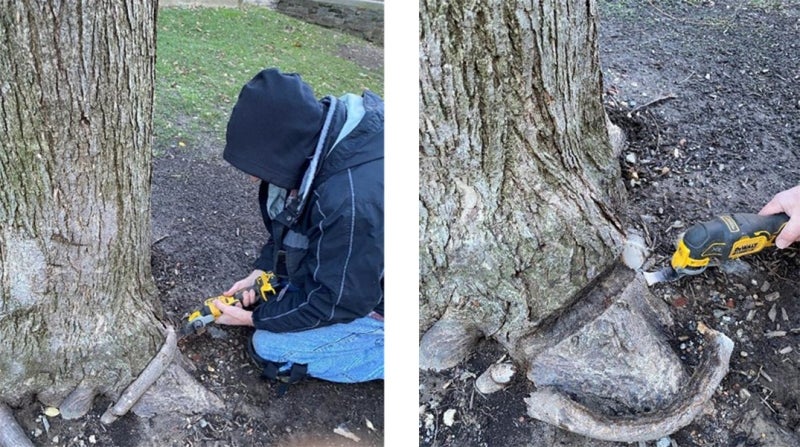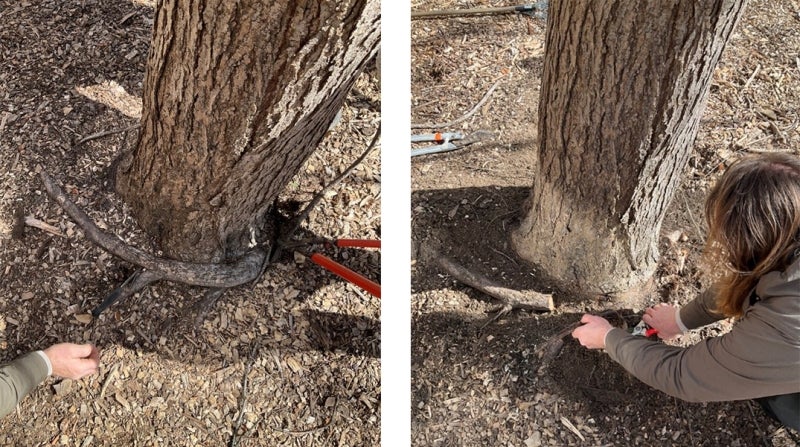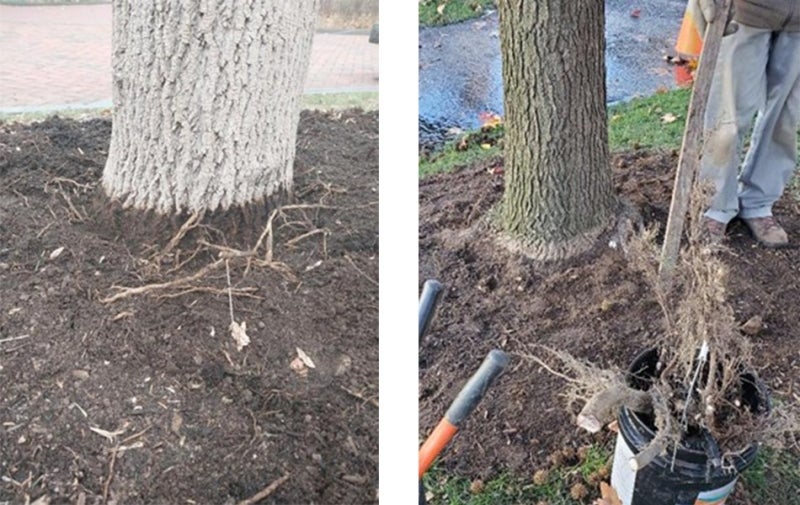Blog



The Morris Arboretum & Gardens Urban Forestry Consultant team (MAUF) works closely with the Office of the University Architect and Operations & Maintenance departments in Facilities and Real Estate Services at the University of Pennsylvania to manage the 6,800 trees on campus. This includes assessing the condition of trees every year, improving management practices, and updating standards to ensure high quality tree care at all life stages.
In 2024, the Morris team began removing stem girdling roots (SGRs) that were hindering the growth of trees on Penn’s campus. SGRs are a threat to urban tree health, and by using Arc GIS mapping software we are able to track trees with SGRs and monitor them over time.
A tree may be girdled when a root grows in a position that crosses or wraps around the trunk. As the tree trunk grows and enlarges annually, the offending roots can gradually girdle or choke the flow of water and nutrients. This makes SGRs a primary cause of tree decline in built landscapes.

Pruning girdling roots is a specialized task performed by arborists. It involves understanding the complex root systems of trees and how they interact with the surrounding environment. It also requires a keen eye and delicate touch to identify where the cut should take place, how deep a cut is necessary, and how many roots should be removed at one time. The objective is to remove as many as feasible without harming the tree’s biological health. In severe cases, SGR removal can take place over the course of several years.


We were able to remove a total of 448 roots of various sized roots from 110 campus trees. Some roots were growing so tightly around the tree that they made an audible POP when they were cut.

Other trees have SGRs that are too large or too imbedded into the tree that they can’t be removed. These trees may survive for years to come, but their own roots will ultimately restrict their vitality.

The existence of stem girdling roots is common for trees in urban areas, sometimes being locked into place at the moment of planting. It is essential to prune or redirect potential girdling roots during the planting process. Additionally, planting a tree too deeply or burying a tree in mulch can encourage excess root growth around the stem that may result in girdling roots. Deep planting and mulching can hide serious girdling roots, meaning that tree managers might not notice the problem until it’s too late. How a tree is planted can impact a tree’s life years or even decades after it is put in the ground.

In order to ensure the longevity of its campus trees, Penn implements a comprehensive tree planting standard for new trees. For example, it requires that the root flare, the area where the trunk tapers into roots, is visible and planted at or above ground level. It also requires that no mulch be placed within six inches of the trunk. Standards like these are proactive measures Penn takes to set its trees up for a long and healthy life.

Though stem girdling root removal will continue at Penn, some campus trees will start growing this spring, freed of constriction for the first time in years! We expect this new condition to add years, if not decades, of life to our urban forest, benefiting all who come to our campus.
Learn more about the Morris Urban Forestry department here and visit Penn Plant Explorer to discover Penn’s trees.